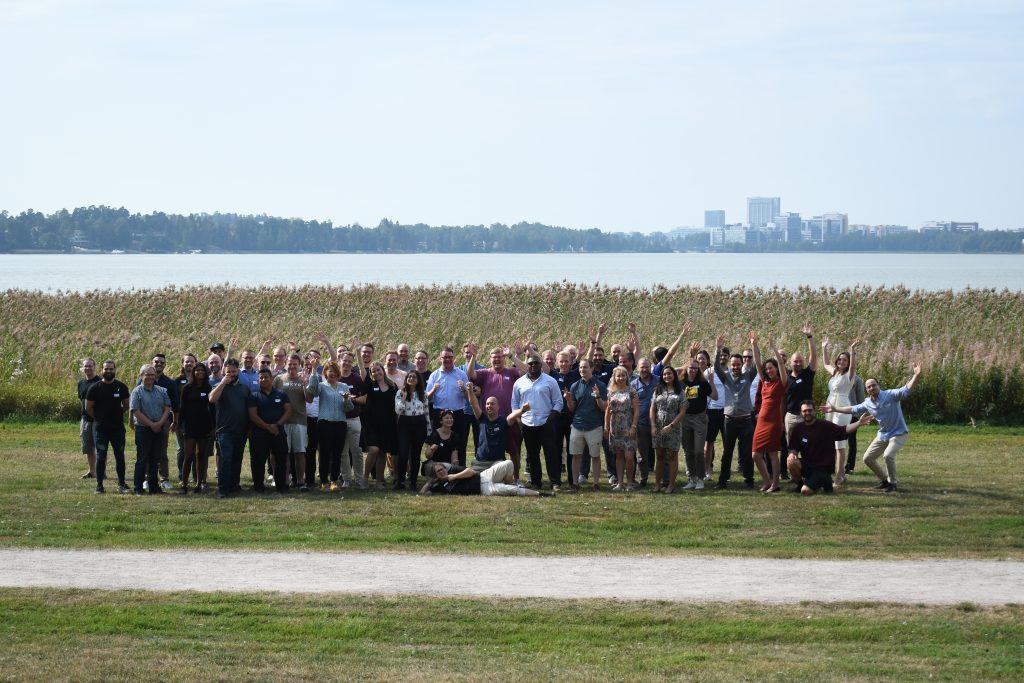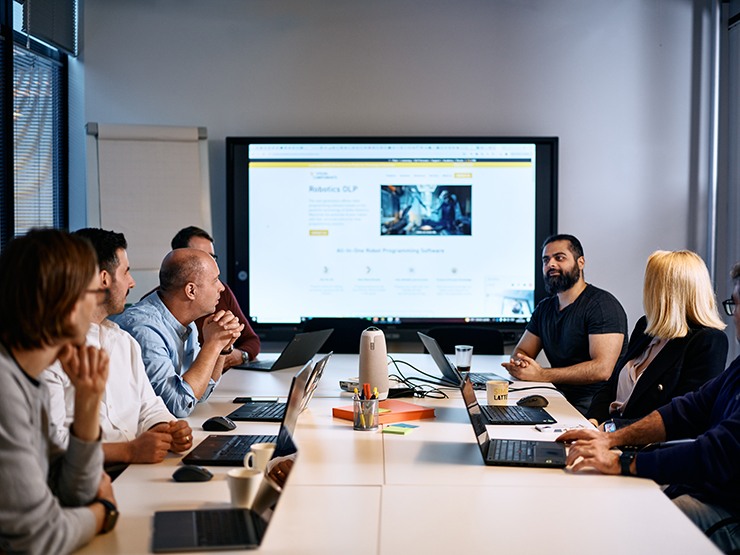About us
With 25 years in business, we’re one of the pioneers of the 3D manufacturing simulation industry. Check out our story.

Who we are
From the beginning we had a strong belief that there must be a faster and more collaborative way to design manufacturing systems. Today’s complex world has shown that we chose the right path.
Visual Components is here to help teams make smarter decisions faster. We build bridges between functions to speed up the process to build digital production.
We provide an open and inclusive platform that encourages testing and a free flow of ideas. We help you to see manufacturing from every angle and move from concept to reality fast and easy.
Visual Components in years
1999 – Visual Components was founded
Founded in 1999 by a team of simulation experts, Visual Components started with a humble goal – to make manufacturing design and simulation technology easy to use and accessible to manufacturing organizations of all sizes.
2003 – KUKA.Sim Layout
KUKA released KUKA.Sim Layout, a KUKA branded robot simulation and off-line programming software, developed by Visual Components.
2005 – 3D Product Family
Visual Components introduced the “3D” product family; its first family of branded Visual Components products.
The 3D Product Family included 3DRealize, 3DRealize R, 3DCreate, 3DSimulate and 3DAutomate.
2016 – Visual Components 4.0
Visual Components introduced the Visual Components 4.0 product family, the next generation of manufacturing simulation technology. Visual Components 4.0 was built on a new software architecture and platform. The architecture was designed to take advantage of modern computing hardware and 64-bit processors. The platform was designed with open APIs to facilitate easy customization and development of 3rd party applications.
2017 – KUKA acquisition
In December 2017, KUKA – a global automation corporation – acquired Visual Components with the aim to define the next level in intelligent automation. For KUKA, Visual Components’ simulation tool was an important milestone with great potential for solutions in KUKA’s simulation ecosystem.
Following the announcement, a statement was made by KUKA that Visual Components remains a hardware neutral simulation platform, and would continue to support and expand its list of robot models, currently 1,500+ models from 50+ robot brands.
2022 – Visual Components Acquires Delfoi Robotics
In October 2022, we proudly announced the acquisition of the robotics division from Delfoi, a global leader in offline robot programming (OLP) solutions. This move marked our ambition to further innovate in 3D simulation software, bolstering our existing offerings with Delfoi’s OLP expertise.
2023 – Launch of Visual Components Robotics OLP
In 2023, we launched the next generation robot offline programming (OLP) software based on the powerful technology of Delfoi Robotics: Visual Components Robotics OLP, helping our customers maximize the potential of their robots with fast, accurate and error-free programming.
202X
We will continue to provide our customers with the best 3D simulation and OLP software on the market and shape the future of simulation technology for others to follow.
Where to find us
Contact details of our global offices.
Corporate compliance
To promote an open, transparent and safe culture, we have a whistleblowing channel.
Our partners
With a global network of 40+ partners, resellers and consultants – you can find a Visual Components representative almost anywhere in the world.

Want to make a difference?
Our vision is to be the first choice for people who want to make a difference in digital production transformation. We’re constantly looking for motivated and talented individuals to join our team to make this vision into reality.